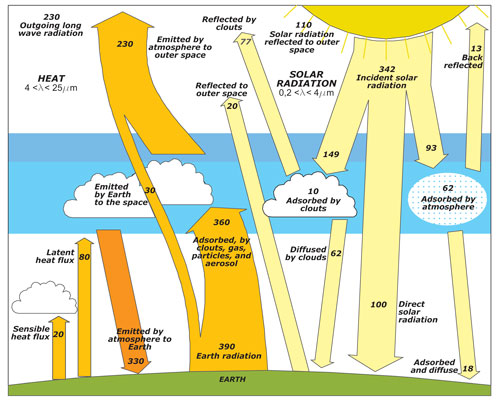 Copenaghen COP15
Copenaghen COP15 TAVOLA ROTONDA
Risks, insurance and investements - supporting low carbon energy technologies
On Dec the 17th, the UNEP's (United Nations Environment Program) roundtable debate on "Risks, insurance and investments - supporting low carbon energy technologies" took place; the discussion, by invitations only, was one of the last events scheduled before COP15 final negotiations.
Project ALBEDO and Project PIPENET (18/12/2009)
Atmosphere concentrations of greenhouse gases (primarily CO2, carbon dioxide) have rapidly increased along the last century mainly because of massive usage of fossil fuel for energy production. A direct consequence is the increase of average low atmosphere temperature.
IPCC (Intergovernmental Panel on Climate Change) 4th assessment report predicts that maintaining actual greenhouse gas emissions rate, would cause, at the end of the 21st century, an average surface warming between 1.8 and 4°C. Actually the only global global warming control policy is represented by Kyoto Protocol; the emissions reduction fixed by Kyoto Protocol is however insufficient to solve global warming problem. Furthermore, most effective solutions for carbon dioxide capture like chemical absorption processes or physical solvent processes are still too expensive, hard and dangerous to be realized.
An innovative simple proposal for global warming control is here proposed which is based on Earth’s surface’s albedo enhancing by the means of laying “white reflecting” (“Bianco Riflettente”) surfaces. The proposal includes an original relation (patent n. PG 2006 A 0086) between reflecting surfaces extent and the corresponding average temperature decrease. Furthermore a ratio between greenhouse gases emission, in terms of equivalent carbon dioxide, and reflecting surfaces extent is also introduced. According to such relation, each 10-30 m2 large (dependìng on latitude and Earth region) horizontal reflecting surface (with certified reflection coefficient higher than 0.9) compensates for the warming effect caused by 1 ton CO2 released into atmosphere.
Many solutions for creating reflecting white surfaces are proposed: roof painting, road and low valued areas whitening, floating white coloured island and artificial salt lakes, etc.
Using particular personal items and everyday products may also help to enhance earth albedo: white umbrella, white cloths, white tents, etc.
National partners who collaborate for the development of this project are: University of Perugia through CIRIAF (Interuniversity Research Centre on Pollution from Physical Agents) and CRC (Research Center on Climate), CMCC (Euro-Mediterranean Centre for Climate Change).
International partners who have joined the project: CAPS (Center for Analysis and Prediction of Storms) at the University of Oklahoma and Professor Greg Blonder of Genuine Ideas.

Figure shows Earth’s energy exchange system: white reflecting surfaces
would increase the “reflected to outer space” component of solar radiation